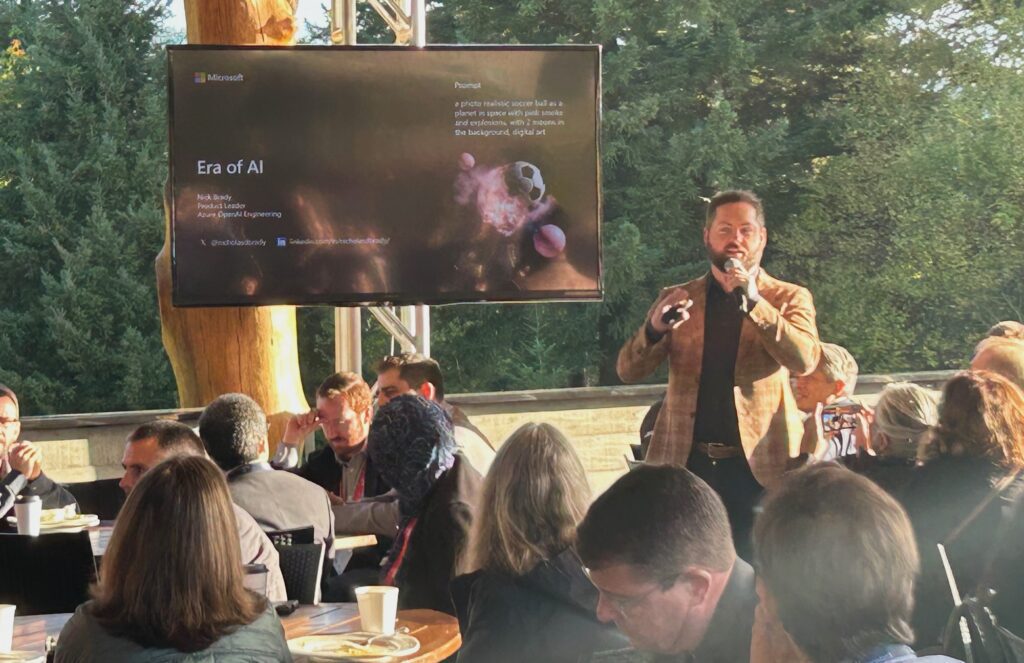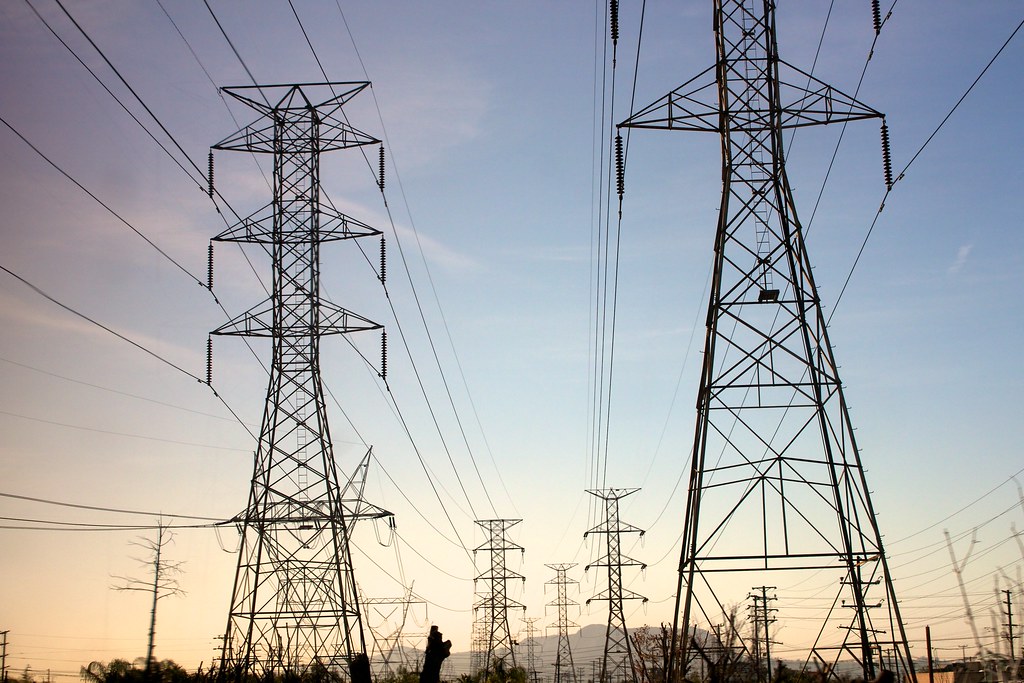A perspective from GridFWD 2023 by Sam Teal
Last month, I attended the 2023 GridFWD conference at Skamania Lodge in the stunning Columbia Gorge. Representatives from utilities, government agencies, energy consultancies, and technology vendors came from across North America to share perspectives on working toward a more resilient, reliable, secure, affordable, and just energy future.
A recurring theme at this year’s conference was the role that artificial intelligence (AI) will play in the next generation of tools and solutions in the energy space. But what’s underneath all the hype about AI as the wave of the future?
There is no shortage of media attention around tools like ChatGPT and other language learning models, and as a result, this type of tool often comes to mind first when AI is mentioned. Day two’s opening plenary by Microsoft’s AI Product Leader, Nick Brady (below), focused on these applications. But the GridFWD23 conference saw multiple sessions using the AI heading. The Disruptive Tech Jams and the Grid Innovation Pitch competition featured several AI-facilitated products, from Delphire’s wildfire detection drones to Lunar Energy’s device optimization software. The NYSERDA IEDR Platform project review showcased how AI is supporting massive volume data management and predictive analytics. Many of the sessions included definitions that distinguished generative AI (which uses data to come up with human-like actions) from, for example, machine learning, but topics covered anything from image analysis of vegetation overgrowth to algorithms trained to monitor asset performance.

The most common thread was the reminder that the tech considered to be artificial intelligence doesn’t actually know anything. In every session, the same challenges—and the same solutions—came down to the people behind the tools. Models need to be trained by human subject matter experts. Outputs need to be validated by human analysts, especially regarding critical infrastructure. Humans are responsible for AI’s biases, for the assumptions built into its code, for the data used to train it, and for who gets to use it for which applications.
Create solidarity around the problem
Panelists also discussed how AI tools face many of the common challenges of deployment as other technologies: if the tools are hard to use, no one will use them, or if the administrative, legal, or security barriers are too high, the tech won’t be seen as “worth it” in the first place. Christina Park of Skydio said that the best strategy to roll out AI-based tools is the same as rolling out any new technology; you first have to create solidarity around the problem the technology is trying to solve. Engage stakeholders up front—that means people responsible for using the technology, people who have data inputs to that technology, people who make decisions based on the outputs of that technology, and people who will be impacted by those decisions—and create a shared definition of what success looks like.
Each successful rollout will help build trust. We’ve seen across the industry that tech adoption begets tech adoption, and AI can even give users confidence with new technologies, like drones used by line workers with AI providing assistive flight controls. AI can also facilitate more consistent, instantaneous, accessible data through consumer-facing tools that can effectively democratize energy information, empowering users, as is the hope of the NYSERDA IEDR project. Whether you’re using AI to improve grid operations, justify investments, or write a resume, AI is a tool that can—and will—make repetitive tasks more efficient and more useful. As Nick Brady put it, “AI is bad at jobs. But it’s good at tasks.”
Within the energy industry, AI is becoming instrumental in determining how energy and non-energy impacts are measured, how investments are allocated, and which communities are tapped for which solutions. When it comes to grid infrastructure, the implications of these decisions could echo for a century or more. So it is essential that we constantly remind ourselves that AI is only as good as the underlying information we use to develop, train, and apply it.
—
Sam Teal is an integrated solutions consultant and contributor to Grid Forward.

